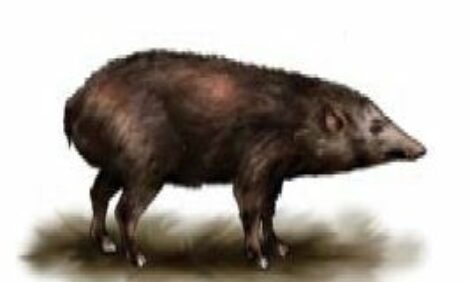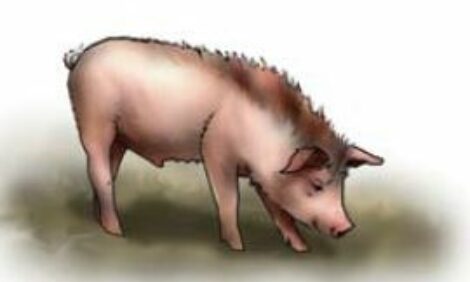



Lacombe
The Lacombe is a breed of domestic pig native to Canada. Named for the Lacombe Research Centre in Lacombe, Alberta, the breed was the first strain of livestock developed in the country.
The Lacombe is a white, medium-sized pig with a docile temperament. The breed has large drooping ears, is long bodied, rather short of leg, and quite meaty in conformation. The breed has been especially selected and noted for its rapidity of gain and docility, especially the sows. There has been much attention paid to litter size, weaning weight, growth rate, efficiency of feed conversion, carcass quality and physical soundness.
The breeding program that founded the breed was conducted at the Canadian Department of Agriculture Research Station at Lacombe, Alberta, the breed was hence named after the location of the station. The foundation stock was top Berkshire sows obtained in Canada which were mated to Landrace-Chester White crossbred boars secured from the United States Department of Agriculture. Starting in 1947, twelve years of selective breeding and testing included 258 sires and 840 dams - all highly selected for performance. All Lacombes that entered the herd after 1954 were backcrossed with purebred Berkshires and those that produced any pigs with black hair were discarded. This insured genetic purity for the white colour, because in swine, the white colour is dominant to black. From 1954-57, Lacombes were evaluated in 60 commercial Yorkshire herds in Alberta and proved to have the performance, capabilities and meat qualities that were sought.
Lacombe boars were released to the public in 1957. The first sows were made available a year later. When released, the breed was estimated to carry 56 percent Landrace, 23 percent Berkshire and 21 percent Chester White blood. Lacombes were accepted for registration by the Canadian National Livestock Records in 1957, and in 1959, the Canadian Lacombe Breeders' Association was incorporated under the Livestock Pedigree Act.
Today the Lacombe breeding stock is held largely by a few private corporations, and is considered critically endangered by Rare Breeds Canada.
A breeding sow or boar requires about 1 t of feed annually. The market pig converts feed to bodyweight gain with an efficiency of about 3:1; that is, more efficiently than beef cattle but less efficiently than broiler chickens. The market animal (100 kg) typically yields about 80 kg of trimmed carcass, following slaughter and evisceration.








